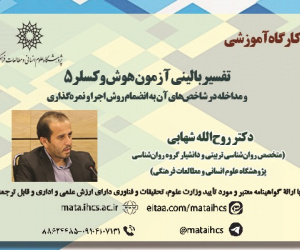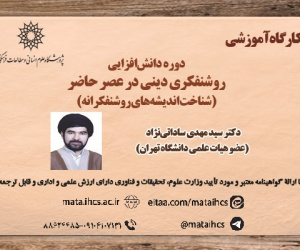بررسی وضعیت اقتصادی و زیست محیطی گل محمدی در منطقه سیستان (مقاله علمی وزارت علوم)
درجه علمی: نشریه علمی (وزارت علوم)
آرشیو
چکیده
کشاورزی یکی از زمینه های اصلی نیازمند توجه در راستای دستیابی به توسعه پایدار به شمار می رود. از این رو، پرداختن به مشکلات اقتصادی، زیست محیطی و اخلاقی در سراسر جهان ضروری است. پژوهش حاضر، با هدف بررسی وضعیت اقتصادی و پایداری گل محمدی، در منطقه سیستان صورت پذیرفت. آمار و اطلاعات مورد نیاز از طریق مصاحبه حضوری و تکمیل پرسشنامه از 86 باغدار منطقه سیستان در سال زراعی 1400-1401 به دست آمد. تحلیل داده ها با استفاده از روش های امرژی (EYR)، حاشیه بازار و رگرسیون فضایی صورت گرفت. نسبت عملکرد امرژی (EYR) برای نظام های تولید گل محمدی در شهرستان های زابل، زهک (بخش مرکزی)، زهک (بخش جزینک)، هیرمند و نیمروز (بخش صابری)، به ترتیب، 033/6، 356/8، 750/11، 823/6 و 326/11 بود. کمترین و بیشترین حاشیه خرده فروشی در محصولات گل محمدی و گلاب، به ترتیب، در شهرستان های نیمروز و زابل مشاهده شد. بررسی کارآیی فنی محصولات بین مناطق مختلف نشان دهنده بالا بودن این شاخص برای محصول گلاب در شهرستان زابل بود. مقدار 2 R در مدل رگرسیون ساده برابر با 0/63 بود و رگرسیون فضایی 0/99 به دست آمد. در خصوص حاشیه بازاریابی برای محصول گلاب در منطقه سیستان، می توان گفت که علاوه بر سایر عوامل مؤثر در حاشیه بازاریابی، موقعیت کشاورزان نسبت به مناطق مجاور (به لحاظ موقعیت فضایی) نیز تأثیر مستقیم و معنی دار بر نمونه های مجاور از نظر حاشیه بازاریابی این محصول دارد. از آنجا که گلاب به عنوان یک محصول فرآوری شده مطرح بوده و پایداری نظام تولید گل محمدی به لحاظ زیست محیطی در شهرستان زابل مطلوب تر از سایر مناطق مورد بررسی است، با اعمال سیاست افزایش سطح زیر کشت و ایجاد تغییرات فناوری در زمینه کشت، فرآوری و صنایع تبدیلی، می توان گامی مهم در راستای پایداری و توانمندسازی اقتصادی بهره برداران برداشت.Investigating the Economic and Environmental Status of Damask Rose in Sistan Region of Iran
Introduction: In order to achieve a sustainable development, it is imperative to prioritize agriculture as a key sector and effectively tackle global economic, environmental, and ethical challenges. The sustainable supply chain encompasses the efficient coordination of material, information, and financial flows among companies within the supply chain. It also involves aligning the goals of sustainable development, including economic, environmental, and social dimensions, with the demands of customers and stakeholders. Given the unfavorable climatic conditions in Sistan region of Iran, it is crucial to prioritize the production of products that can both facilitate the participation of farmers in an economic development and minimize damage to environmental resources. Materials and Methods: This study aimed at investigating the economic condition and long-term viability of the Damask rose in the Sistan region. Data and insights were gathered through personal interviews and questionnaires from individuals involved in the cultivation, wholesale, retail, and distribution of Damask rose and rose water in the region during the period of 2021-2022. The study examined and analyzed production systems by utilizing four types of resources: free renewable environmental inputs (R), free non-renewable environmental inputs (N), free renewable inputs (FR), and non-free non-renewable inputs (FN). The marketing margin was analyzed using both a simple regression equation (econometric model) and geographic weighted regression (GWR) techniques. The estimation was performed using EVIEWS V5 and GIS software. Results and Discussion: The free renewable environmental inputs (R) for the production systems of Damask rose in the cities of Zabol, Zahak (Central and Jazinak districts), Hirmand, and Nimruz (Sabori district) were estimated 7.03E+14, 6.43E+14, 8.13E+14, 6.4E+14 sej ha -1 , respectively. The quantity of free renewable environmental inputs (R) in this system for the specified areas was found as 1.43E+16, 1.70E+16, 2.23E+16, 1.65E+16, and 2.86E+16 sej ha -1 , respectively. The Damask rose production system in Zabol city had the highest EIR index value (0.199), while the rose production system in Zahak city (Jazinak district) had the lowest value (0.093). The ESI* values for the production systems of Damask rose in the mentioned areas were 0.398, 0.441, 0.566, 0.390, and 0.537, respectively. The ESI* values indicated a greater sustainability in the surveyed areas compared to the ESI values. The marketing margin analysis also revealed that the lowest retail sales margin was estimated for rose and rose sub-products in Nimruz (Central district) and Nimruz (Sabori district), respectively. Conversely, the highest margin was observed in Zabol city for both rose and rose sub-products. The rose water product in Zabol city showed the highest level of technical efficiency, with a technical inefficiency score of 0.007. On the other hand, the Central district of Nimruz city was found to be the most inefficient area in terms of both Damask rose and rose water production, particularly in terms of price efficiency. The R 2 value in the simple regression model was 0.62, while in the spatial regression model, it was 0.3. This suggests that spatial factors do not significantly impact the marketing margin of this product. The results of both equations are similar, indicating that the marketing margin for this product is not influenced by the geographical location of farmers in different regions. Conversely, the rose water product indicated an R 2 value of 0.63 in the simple regression model, while the spatial regression yielded a value of 0.99. The success of the rose water product in the Sistan region is influenced by various factors, including the location of the farmers. The spatial position of the farmers has a direct and significant impact on the marketing of the product, particularly in the adjacent areas. The study findings showed a substantial and statistically significant impact of marketing expenses on the market profit margin. Specifically, for each incremental unit increase in marketing costs, the marketing margin increases by 27.76 units. Conclusion and Suggestions: Considering the rose water as a sub-product or processed product, it is worth noting the environmental advantages of the rose water produced in Zabol city compared to other areas. Therefore, processing these products can greatly benefit the farmers in terms of economic capability and increased profits from sales. By implementing a policy that focuses on increasing technological advancements and expanding the cultivation of Damask rose in the region, while also incorporating new processing and conversion technologies, two primary objectives of sustainability and economic empowerment for users can be achieved.







